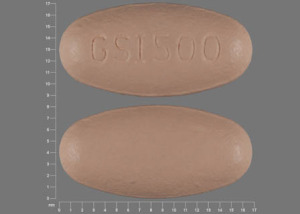Ranexa Side Effects
Generic name: ranolazine
Medically reviewed by Drugs.com. Last updated on Apr 20, 2023.
Note: This document contains side effect information about ranolazine. Some dosage forms listed on this page may not apply to the brand name Ranexa.
Applies to ranolazine: oral packet, oral tablet extended release.
Serious side effects of Ranexa
Along with its needed effects, ranolazine (the active ingredient contained in Ranexa) may cause some unwanted effects. Although not all of these side effects may occur, if they do occur they may need medical attention.
Check with your doctor immediately if any of the following side effects occur while taking ranolazine:
More common
- Dizziness
Less common
- Bloating or swelling of the face, arms, hands, lower legs, or feet
- chest tightness
- difficult or labored breathing
- fast, irregular, pounding, or racing heartbeat or pulse
- feeling of constant movement of self or surroundings
- lightheadedness
- rapid weight gain
- sensation of spinning
- tingling of the hands or feet
- unusual weight gain or loss
Rare
- Abnormal or decreased touch sensation
- agitation
- blood in the urine
- blurred vision
- burning, crawling, itching, numbness, prickling, "pins and needles", or tingling feelings
- chest pain or discomfort
- chills
- cold sweats
- coma
- confusion
- decreased urine output
- depression
- dizziness, faintness, or lightheadedness when getting up suddenly from a lying or sitting position
- fainting
- headache
- hostility
- irritability
- lethargy
- muscle twitching
- nausea
- seizures
- shakiness in the legs, arms, hands, or feet
- slow or irregular heartbeat
- stupor
- sweating
- trembling or shaking of the hands or feet
- unusual tiredness or weakness
Incidence not known
- Decrease in frequency of urination
- decrease in urine volume
- difficulty in passing urine [dribbling]
- large, hive-like swelling on face, eyelids, lips, tongue, throat, hands, legs, feet, or sex organs
- painful urination
- seeing, hearing, or feeling things that are not there
Other side effects of Ranexa
Some side effects of ranolazine may occur that usually do not need medical attention. These side effects may go away during treatment as your body adjusts to the medicine. Also, your health care professional may be able to tell you about ways to prevent or reduce some of these side effects.
Check with your health care professional if any of the following side effects continue or are bothersome or if you have any questions about them:
More common
- Difficulty having a bowel movement (stool)
Less common
- Dry mouth
- stomach pain
Rare
- Acid or sour stomach
- belching
- continuing ringing or buzzing or other unexplained noise in the ears
- hearing loss
- heartburn
- indigestion
- lack or loss of strength
- stomach discomfort or upset
- vomiting
For Healthcare Professionals
Applies to ranolazine: oral granule extended release, oral tablet extended release.
General
The most common adverse reactions were dizziness, headache, constipation, and nausea.[Ref]
Gastrointestinal
Common (1% to 10%): Constipation, nausea, vomiting
Uncommon (0.1% to 1%): Abdominal pain, dry mouth, dyspepsia, flatulence, stomach discomfort
Rare (less than 0.1%): Pancreatitis, erosive duodenitis, oral hypoesthesia[Ref]
Nervous system
Common (1% to 10%): Dizziness, headache
Uncommon (0.1% to 1%): Lethargy, syncope, hypoesthesia, somnolence, tremor, postural dizziness, paresthesia, vertigo, tinnitus
Rare (less than 0.1%): Amnesia, depressed level of consciousness, loss of consciousness, coordination abnormal, gait disturbance, parosmia
Postmarketing reports: Myoclonus[Ref]
Other
Common (1% to 10%): Asthenia
Uncommon (0.1% to 1%): Fatigue, peripheral edema
Rare (less than 0.1%): Impaired hearing[Ref]
Metabolic
Uncommon (0.1% to 1%): Anorexia, appetite decreased, dehydration, weight decreased
Rare (less than 0.1%): Hyponatremia
Postmarketing reports: Hypoglycemia[Ref]
Psychiatric
Uncommon (0.1% to 1%): Anxiety, insomnia, confusional state, hallucination
Rare (less than 0.1%): Disorientation[Ref]
Musculoskeletal
Uncommon (0.1% to 1%): Pain in extremity, muscle cramp, joint swelling, muscular weakness[Ref]
Cardiovascular
Uncommon (0.1% to 1%): Hot flush, hypotension, prolonged QT corrected interval
Rare (less than 0.1%): Peripheral coldness, orthostatic hypotension
Frequency not reported: Bradycardia, palpitations[Ref]
Genitourinary
Uncommon (0.1% to 1%): Dysuria, hematuria, chromaturia
Rare (less than 0.1%): Urinary retention, erectile dysfunction[Ref]
Respiratory
Uncommon (0.1% to 1%): Dyspnea, cough, epistaxis
Rare (less than 0.1%): Throat tightness
Frequency not reported: Pulmonary fibrosis[Ref]
Ocular
Uncommon (0.1% to 1%): Blurred vision, visual disturbance, diplopia[Ref]
Renal
Uncommon (0.1% to 1%): Serum creatinine increased, blood urea increased
Rare (less than 0.1%): Acute renal failure
Frequency not reported: Blood urea increased[Ref]
Dermatologic
Uncommon (0.1% to 1%): Pruritus, hyperhidrosis
Rare (less than 0.1%): Angioedema, urticaria, cold sweat, rash[Ref]
Hematologic
Uncommon (0.1% to 1%): Platelet or white blood cell count increased
Frequency not reported: Eosinophilia, thrombocytopenia, leukopenia, pancytopenia[Ref]
Hepatic
Rare (less than 0.1%): Hepatic enzyme levels elevated[Ref]
More about Ranexa (ranolazine)
- Check interactions
- Compare alternatives
- Reviews (69)
- Drug images
- Dosage information
- During pregnancy
- FDA approval history
- Drug class: antianginal agents
- En español
Patient resources
Other brands
Professional resources
Other brands
Related treatment guides
References
1. Product Information. Ranexa (ranolazine). Calmoseptine Inc. 2006.
2. Cerner Multum, Inc. UK Summary of Product Characteristics.
Further information
Always consult your healthcare provider to ensure the information displayed on this page applies to your personal circumstances.
Some side effects may not be reported. You may report them to the FDA.

